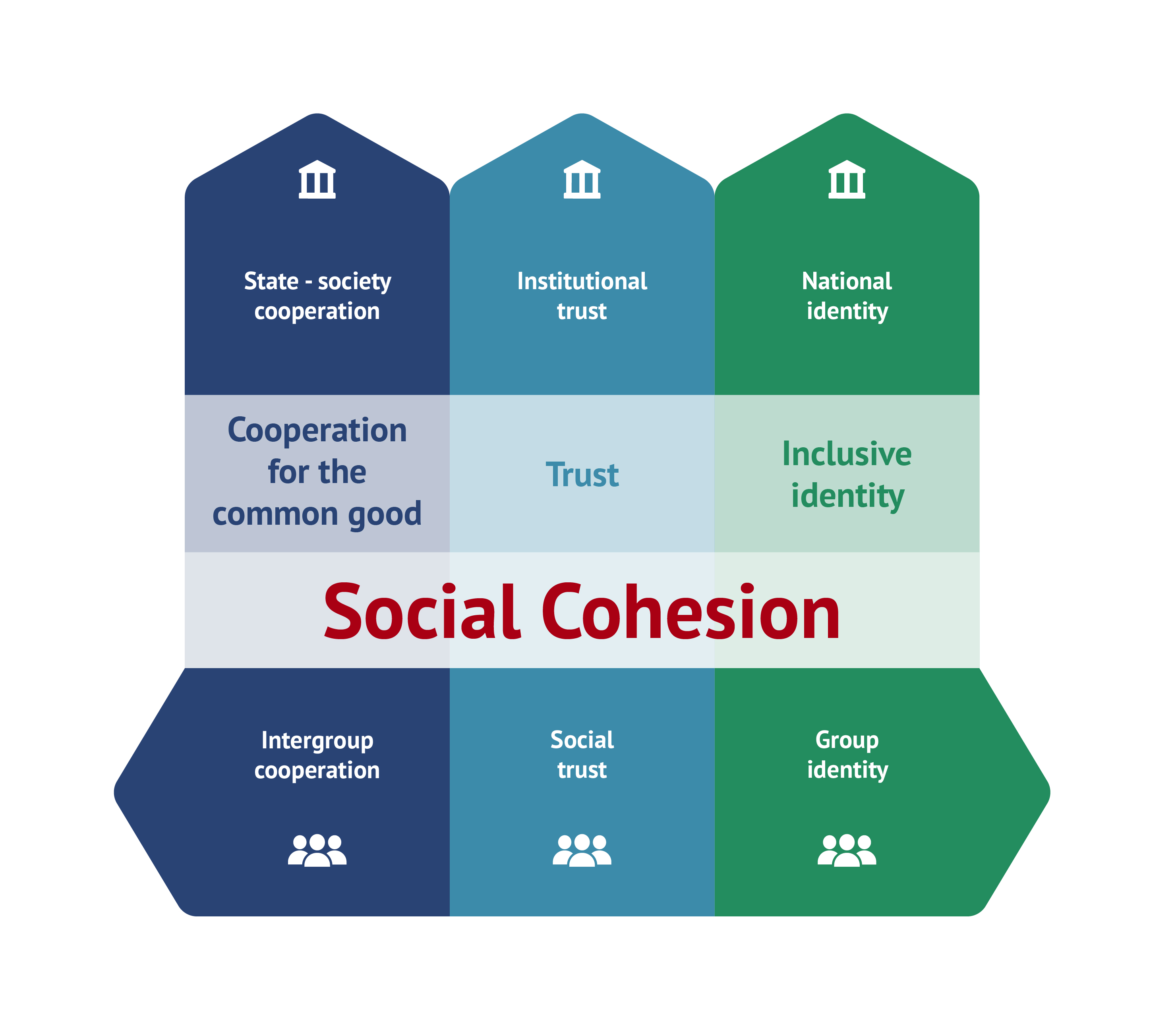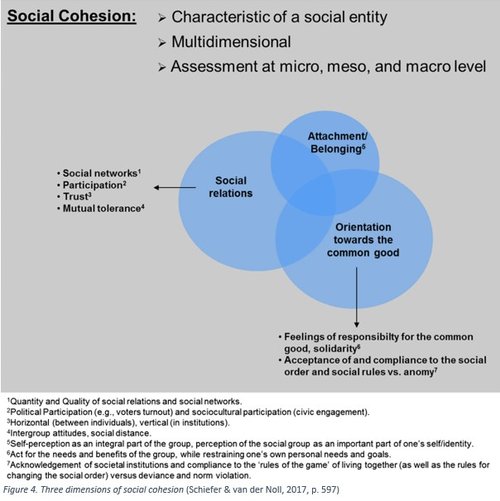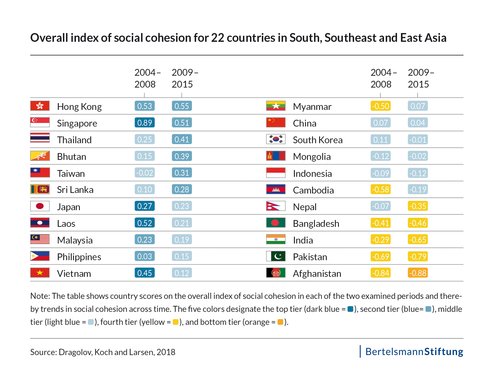IDOS' Concept of Social Cohesion
Key facts
Identity/feeling of belonging
Orientation towards the common good
Cooperation
Vertical dimension (between individuals or groups and institutions)
Overview
We develop the definition by Chan et al. (2006) further and conceive social cohesion as:
“the vertical and the horizontal relations among members of society and the state, which hold society together. Social cohesion is characterized by a set of attitudes and manifestations that includes trust, an inclusive identity, and cooperation for the common good. It is the glue that holds society together.”
According to our conceptualization, social cohesion consists of three attributes – cooperation for the common good, trust and an inclusive identity – and does so on two dimensions (figure 1). Focusing on two dimensions within each attribute is important because social cohesion refers to both, the relations between members of society (horizontal dimension) and members of a community and the state (vertical dimension). Although each element is important in its own, social cohesion is more than the sum of its individual elements and some might argue that a more encompassing conceptualization might be necessary. However, in line with some of the key arguments in the debate on the concept, we purposefully developed a slim concept, which allows us to theoretically and empirically investigate important causal relationships, i.e. on inequality or value orientations. The three attributes on the horizontal and vertical dimension are specified as follows:
1. Cooperation for the common good exists in a society where many people and groups cooperate for "interests that transcend those of the individuals involved". While the importance of cooperation among individuals and groups has been stressed in the past, the definition also incorporates vertical cooperation. Individuals cooperate with the state on the vertical dimension through participation in public life and consultation processes.
2. Trust includes to both social and institutional trust. Social trust is the "ability to trust people outside one's familiar or kinship circles". It is also sometimes referred to as “bridging trust” that acts as the “bond that people share across a society and across economic and ethnic groups, religions, and races”. This is the type of trust capturing the horizontal dimension. Institutional trust, instead, is the trust towards "formal, legal organizations of government and state, as distinct from the current incumbents nested within those organization, and thus refers to the vertical level.
3. Inclusive identity: A socially cohesive society is one in which individuals with different identities can co-exist in a peaceful way and where some particular identities are not dominant over the overall collective identity. At the horizontal level different group identities are tolerated, recognized and protected. At the vertical level this means that people identify with a broader entity (e.g. the nation) that is more than the sum of individuals and that bridges different identities of a society.
Check out a 5-minute animated video that explains our concept in an easily accessible manner.





